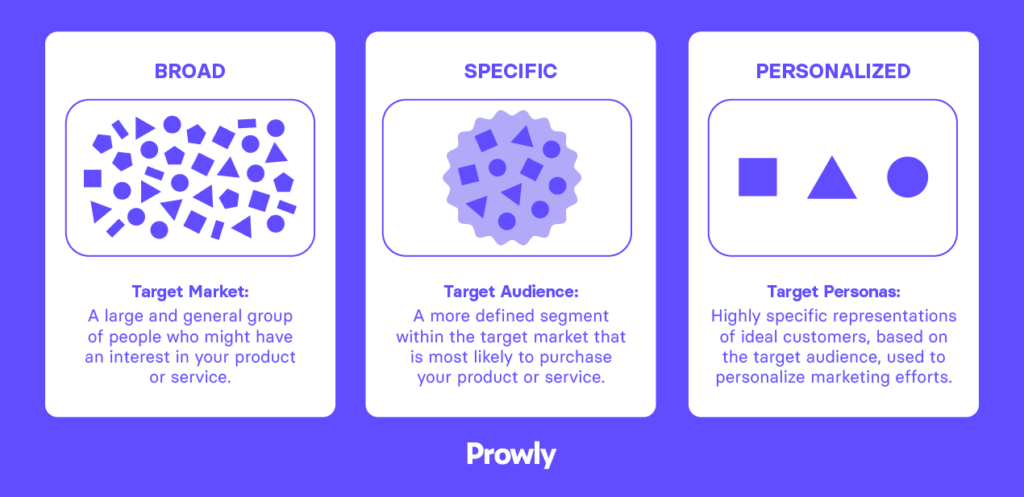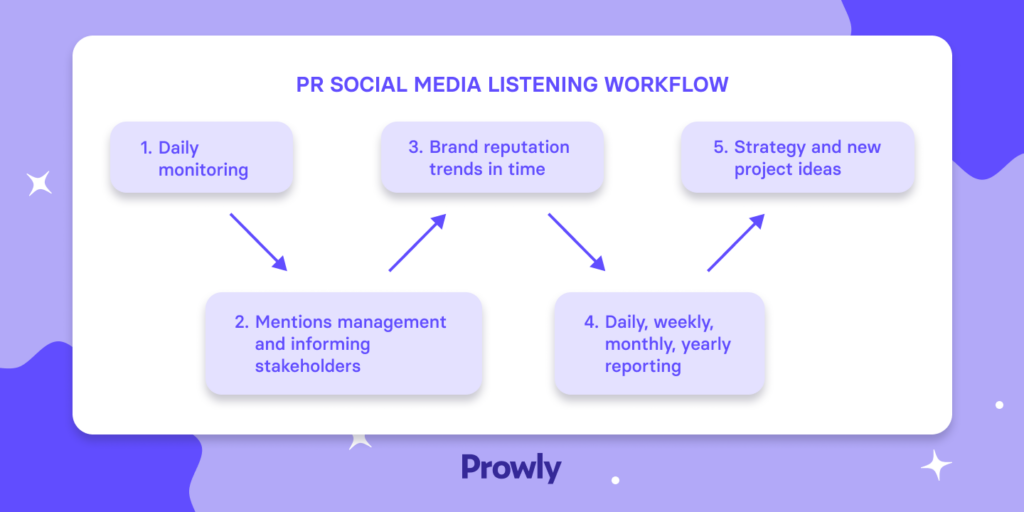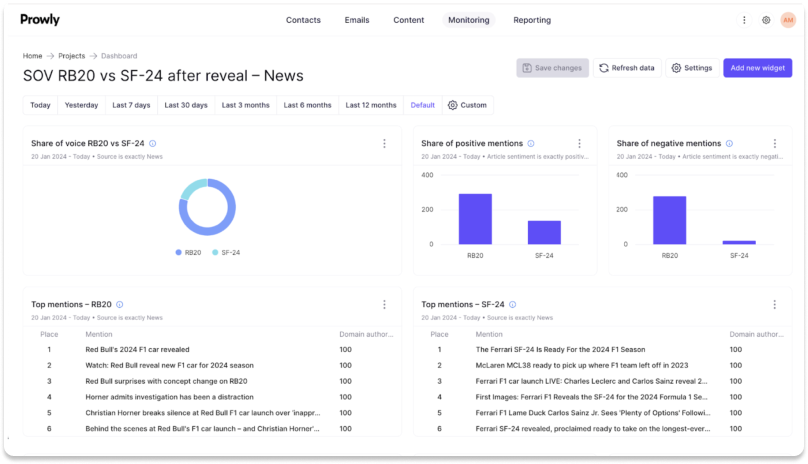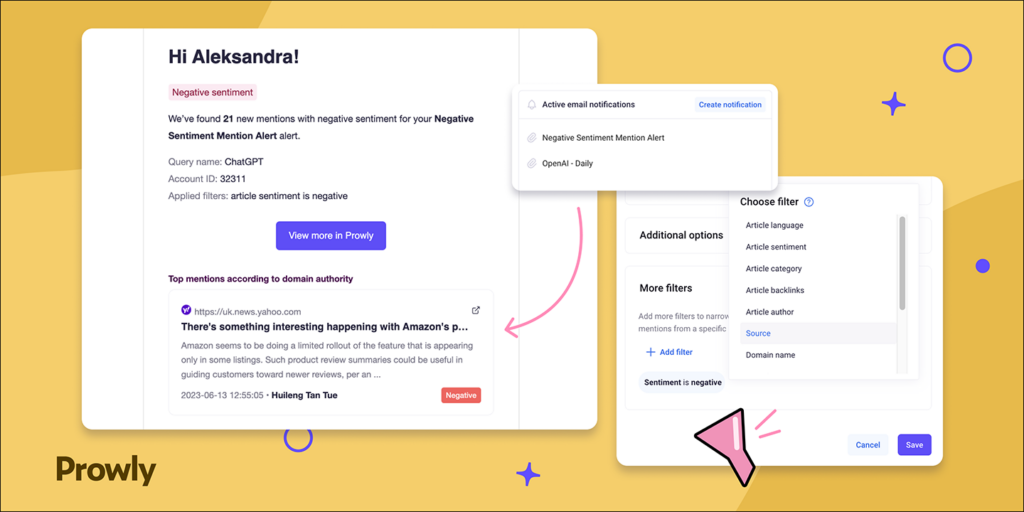Communication isn’t just important—it’s everything. Whether it’s with your team, customers, the media, or your social followers, it shapes every interaction. Yet, too many businesses overlook the one thing that keeps it all together: a communication plan.
A solid communication plan is your secret weapon—a strategic blueprint that maps out exactly how your organization delivers the right message to the right audience at the right time to crush your goals.
Today, we'll show you how to write a comms plan the easy way, with steps and examples that anyone can follow.
Benefits of a communication plan
Communication plan is a strategic document that outlines how your organization shares information with specific audiences to achieve your desired goals. It doesn't require significant investments in time and money and it can pay off tenfold for any business.
These are the most important advantages of creating an effective communication plan:
Clearer messaging
You clearly identify the core themes for your communication efforts, eliminating ambiguity by focusing on one target audience and their needs and explain what to say, how, and when.
Improved team alignment
When you define roles, responsibilities, and communication protocols, everyone is on the same page. They know what is expected of them, their key objectives, and how every team member fits into the larger picture.
Enhanced PR crisis management
When crises strike, you control the narrative and you know which key messages to share, where, and how. You establish protocols for handling any situation, minimizing panic, rumors, and misinformation.
Difference between internal and external communication
Communication typically happens on two levels: internally, with your team and key stakeholders, and externally, with the general public, the press, other businesses, etc. Here are the key differences between these communication types:
Internal communication
This is your communication strategy for your own team and it covers the key points for transferring information internally.
- It focuses on sending the right message clearly and effectively in your team.
- Examples include: internal memos, team updates, newsletters and announcements, employee engagement initiatives, email communication, etc.
- The goals for internal communication are to improve collaboration, build a solid foundation for company culture, and streamline operations across teams and roles.
External communication
An external communication strategy is essential for public relations and, regardless of your business or industry, you should create one and use it to help reach your organization's goals.
- It focuses on clear and timely communication with external stakeholders: customers, clients, media professionals, such as journalists, and the wider public.
- Examples include: company announcements, social media content, organic and paid media campaigns, press releases, etc.
- The goals for external communication are to build brand awareness, improve and maintain brand reputation, and create better relationships with stakeholders, customers, and the public.
How to create a communication plan, step by step
A great communication strategy starts with an effective communication plan. You don't have to be a PR expert to create one, because we'll show you how to do it in just a few simple steps.
1. Objectives
Every communication plan is different because ideally, you'll have a unique goal for your business. It could be to increase awareness, launch a new product or service, improve internal communication, increase the Net Promoter Score of your existing customers, increase customer engagement, resolve a crisis successfully with a press release, or something entirely different.
Make sure your goals are SMART (Specific, Measurable, Achievable, Relevant, Time-bound).
💡 For example, a good objective could be to increase brand awareness by 20% in the North American market by the end of Q2 of 2025.
2. Target audience
In the case of internal communication plans, this is self-explanatory. For an external communication plan, you should identify your main target audience as well as the most relevant segments within it.

💡 For example, this is how it might look:
➖ Primary audience: Millennials in the tech industry, aged 25-35, interested in SaaS tools.
➖ Secondary audience: Industry journalists and bloggers.
➖ Stakeholders: Internal employees and shareholders.
Target audience segmentation such as this helps you craft unique messages for different channels, campaigns and situations.
3. Key messages
These are the central ideas or points that you want your target audience to associate you with.
It's a foundational element that shapes all of your communication efforts and ensures that everything that comes from you is coherent, clear, impactful and aligned with your overall objectives.
Defining your key messages early on is important because with them in hand:
- Your communication is consistent across channels, departments, and key stakeholders
- You break down complex ideas into clear messages your target audience can understand
- All communication is aligned with your brand identity, values, and objectives
- You provide a framework for stakeholders to rely on and ensure that everyone speaks with one voice
- You increase impact by focusing on the topics that matter the most to your target audience
💡 For example, here is one of the key messages from Nike for 2025:
"We all share the responsibility for our playground—Planet Earth. That’s why we’re reimagining things top to bottom through sustainability and circularity. We’re focusing on carbon, waste, water, and chemistry, aiming to hit targets by 2025."
4. Communication channels
If you're selling furniture, Pinterest should be open in one tab at all times while LinkedIn may not be the best place to catch your target audience.
Your communication channels are platforms where you communicate with your (potential) customers. If you've done your audience research well, you'll know where to find them and how to talk to them.
Another reason why choosing the right channel is important is catering to different audience preferences. Emails are excellent for bigger announcements while short updates are best shared on platforms such as Instagram, TikTok or Facebook.
💡 For example, your SaaS brand just launched a new product:
➖ You'll use your website to create an official announcement with a blog post
➖ Through email, you send a shorter version of the announcement to your subscribers
➖ On LinkedIn and X, you share a short caption with a shortened link to the blog
➖ Within the app, the caption is even shorter and by clicking on "read more", the user is sent to the blog
Prowly can help you by teaching you where your target audience is.
If you search for your brand name or a relevant product/category, Prowly shows you where people mention those terms so you know what to focus on for the best results.

For example, you can see that historically, your brand has had huge engagement on LinkedIn while X and Instagram have been very quiet. In the future, you know that you should spend more time and budget on LinkedIn compared to other channels.

Even though we tend to focus on digital channels and mentions, don’t overlook offline opportunities.
Being featured in print or broadcast can enhance your credibility, be perceived as more prestigious, and—most importantly—have a longer-lasting impact than a simple post or tweet.
With Prowly, you can track both print and broadcast mentions alongside digital coverage, ensuring a comprehensive media monitoring strategy.
5. Strategies and tactics
A strategy is an overarching approach to communication while tactics are actionable methods to implement a strategy.
💡 For example, your strategy could be to build your brand authority in the SaaS industry. To achieve this, you'll use a mix of public relations, thought leadership content on your blog, podcast appearances, and collaboration with industry influencers.
Strategies provide direction while tactics break down strategies into actionable steps you can follow.
6. Timeline
A clear timeline helps you establish when tasks and milestones are to be completed, be it internal or external communication.
💡 For example, a strategic communications plan template should list when new announcements are released, and in which order. Also, in case of crises, when the brand should step forward and issue a public statement about the incident.
7. Roles and responsibilities
If everyone does everything, it becomes easy for nobody to do anything. A clear communication plan should include major roles and responsibilities for internal and external communication.
This ensures accountability and prevents multiple team members from doing the same work.
💡 For example, the PR manager can handle media communications and press release creation as the social media manager is in charge of all the handles for the brand, all while the project lead oversees operations and monitors key metrics.
8. Crisis communication plan
Statistically, crises are not that likely to happen to your brand. But when they do happen, they can do major damage overnight. Having a crisis plan in your communication strategy format ensures that you're prepared for the worst, even if it never comes.
Include a crisis communication portion in your communication plan template to:
- Reduce your response time
- Minimize potential damage
- Maintain trust with key stakeholders and your customers
💡 For example, you have a social media crisis on your hands, but you found out early on. The reason is simple: you set up a monitoring system with Prowly to get notifications whenever your brand gets mentioned frequently and especially in a negative context.
Here are some good PR crisis management examples you can learn from.

Prowly can be set up to monitor brand terms, specific industry keywords, a product category, or anything else you want to track. However, tracking your brand name (and your competitors' names) is a solid foundation for a crisis communication plan.
P.S. Here’s an article that might come in handy if you’re looking for a tool to measure the impact of your communication efforts.
Respond quickly to crises before they escalate with Prowly for free!
9. Budget
Creating a budget is crucial, especially in the case of external communications. Based on how much you can spend, you can choose the most effective channels for the job and set realistic goals in terms of the return on investment you want to achieve.
💡 For example, you can set aside $1,000 for advertising campaigns per month, $1,000 for content creation on organic channels, and $500 monthly for PR tools such as Prowly.
10. Evaluate and measure success
Measuring the outcomes of your communication plan ensures accountability, sets benchmarks for performance, and provides insights for improvement.
Depending on the target audience, the channels and the tactics, you'll have a different set of KPIs for measuring the success of your communication plan.
Some examples include:
- Website organic traffic
- Share of voice
- Leads generated through a channel
- Social media reach
- Follower growth
And others.
With Prowly, you can get immediate insights about your online presence thanks to online monitoring and social media listening. And easily create reports that include all the key metrics within the app.

Simply track your brand name, specific campaign or a keyword of interest, and Prowly shows you how many times you were mentioned and in what context. The best of all is that you can easily compare yourself against the competition.
Sample communication plan
Still wondering what should be in a communication plan? Here's a sample of what a good comms plan should look like in a product launch for an eco-friendly smart water bottle:
1. Objectives
- Increase brand awareness by 25% among eco-conscious consumers aged 25-40 within six months.
- Generate 10,000 product pre-orders within the first three months of launch.
- Position the company as a leader in sustainable hydration solutions.
2. Target Audience
- Primary Audience:
Eco-conscious millennials and Gen Z professionals (ages 25-40) who value sustainable and innovative products. - Secondary Audience:
Influencers and bloggers focused on green living, health, and technology. - Stakeholders:
Investors, internal employees, and key partners involved in the product launch.
3. Key Messages
- Core Message:
"Stay hydrated and help the planet with our eco-friendly smart water bottle that tracks your hydration while reducing single-use plastic waste." - Supporting Proof Points:
- Made with 100% recycled materials.
- Tracks hydration habits via a connected app, encouraging healthier lifestyles.
- Every purchase supports global clean water initiatives.
4. Communication Channels
- Social Media: Instagram and TikTok for product teasers, influencer partnerships, and user-generated content.
- Email Marketing: Pre-launch email series for early sign-ups and exclusive offers.
- Website: Landing page optimized for pre-orders with product features and impact statistics.
- PR: Press releases targeting green living publications and tech blogs.
- Events: Host a virtual launch event showcasing product features and sustainability efforts.
5. Strategies and Tactics
- Strategy: Build excitement around the launch by showcasing the product’s eco-friendliness and health benefits.
- Tactics:
- Partner with influencers to create unboxing and review videos.
- Offer early-bird discounts to email subscribers.
- Launch a social media campaign with the hashtag #HydrateSustainably.
6. Timeline
- Month 1-2:
- Finalize key messages and design marketing materials.
- Build the landing page and pre-order system.
- Month 3:
- Launch pre-order campaign with influencer collaborations and PR outreach.
- Month 4-6:
- Track campaign performance, adjust tactics, and prepare for the product’s physical launch.
7. Roles and Responsibilities
- Project Manager: Oversees the execution of the communication plan and ensures timelines are met.
- PR Specialist: Handles media outreach and press releases.
- Social Media Manager: Develops and schedules content for platforms.
- Marketing Analyst: Tracks campaign metrics and provides performance insights.
8. Crisis Communication Plan
- Potential Risks: Delays in production or negative feedback about the product.
- Plan:
- Establish a response team to handle issues promptly.
- Prepare pre-approved statements for common crises (e.g., shipping delays).
- Monitor social media and press coverage daily for early identification of concerns.
- Example Response:
"We are committed to delivering a top-quality product and apologize for any delays. Customers impacted by shipping issues will receive a 15% discount on their next order."
9. Budget
- Advertising: $15,000 for social media ads and influencer partnerships.
- PR: $5,000 for press release distribution and media outreach.
- Content Creation: $3,000 for video production and landing page design.
- Monitoring Tools: $2,000 for analytics and tracking tools like Prowly.
10. Measurement and Evaluation
- Metrics to Track:
- Website traffic and pre-order conversions.
- Social media engagement (likes, shares, comments).
- Media mentions and sentiment analysis.
- Tools:
- Google Analytics for website traffic.
- Prowly for PR and media tracking.
- Social media platform insights for engagement metrics.
- Post-Campaign Review:
- Compare actual results against objectives.
- Identify successful tactics and areas for improvement in future campaigns.
Over to you
Like a high-quality pair of shoes or a great mattress, an online communication plan is one of those things you don't know you need until you have it. Communication plans help you reach more people, refine your message, measure your results more accurately. Put simply, they let you speak your mind.
With Prowly, we can help you get there with a set of PR tools for businesses big and small. Create press releases, reach out to (the right) journalists, create PR reports, monitor your online presence, and much more, all in one tool.

